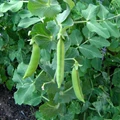
Sapota, popularly known as Chiku is native to Mexico and other South American nations. It is primarily used to make latex, which is utilized in the manufacture of chewing gums. Karnataka, Tamil Nadu, Kerala, Andhra Pradesh, Maharashtra, and Gujarat are the largest producers in India. Sapota is grown on 65 thousand acres of land and produces 5.4 million metric tonnes per year.
Economics importance
The fruit has a considerable amount of digestible sugar (15-20%) as well as protein, fat, fiber, and minerals (Ca, P and Fe.) Sweets and halwa are made from sapota pulp. It may also be found in fruit salads and milkshakes. Chicklet and chewing gum are made from the milky latex exuded by unripe sapota fruits, known as a giggle.
Climatic requirements
Sapota is a tropical crop that may be produced anywhere from sea level to 1200 meters above sea level. For growth, it requires a warm (10–38 degrees Celsius) and 70 percent relative humidity and it may be grown all year. Its cultivation is best suited to coastal climates.
Sapota grows best in alluvial, sandy loam, red laterite, and medium black soils with adequate drainage. It only produces one harvest from summer flowering in April and May at higher elevations in Punjab and Haryana.
Land Preparation and Planting
The field is leveled after being plowed two to three times. Land that is undulating is separated into terraces and leveled. On the windward side or on both sides of the orchard, tall and thick-growing trees such as mango, Jamun, tamarind, silver oak, and casuarinas are planted. The windbreak plants should be spaced 1.5 to 1.8 meters apart in the row. Air layering, grafting, and budding are all ways used to commercially propagate Sapota.
Fertilizer requirement
About 50 kilograms of farmyard manure, 1 kg of nitrogen (1.5 kg in the case of rainfed types), 0.5 kg of P2O5, and 0.5 kg of K2O are treated per tree every year, with the dose determined by the age of the tree and the state of nutrients in the soil, particularly Phosphorus and Potassium. Fertilizers are administered before the monsoon season begins in rainfed areas. It should be administered in two halves under irrigated conditions, one half before the start of monsoon and the other half in the post-monsoon period (September-October).
Harvesting and Yield
Sapota bears fruit in the third year after planting, however commercial yields can be attained in the fifth year. The two primary flowering seasons are October-November and February-March, with January-February and May-June being the harvesting seasons. From blooming to fruit maturity, the Sapota takes four months.
The fruits are selected or harvested using a unique harvester with a circular ring attached to a long bamboo and a net bag. Crop bearing begins in the fifth year. As a result, intercropping such as vegetables may be used in the project's first four years, making it profitable. Production improves from 4.0 tonnes per acre in the fifth year to 6.0 tonnes per acre in the seventh year in a high-density plantation. From the eighth to the fifteenth year, the yield stabilizes at 8.0 tonnes/acre.
Varieties
-
Important varieties cultivated in different states of India are listed below:
-
Bihar & Uttar Pradesh: Baramasi
-
Gujrat: Cricket Ball, Pilipatti, Kalipatti, PKM-1
-
West Bengal: Cricket ball, Calcutta round, Baramasi, Baharu, Calcutta round.
-
Maharashtra: Murabba, Dhola Diwani, Cricket ball, Kalipatti









